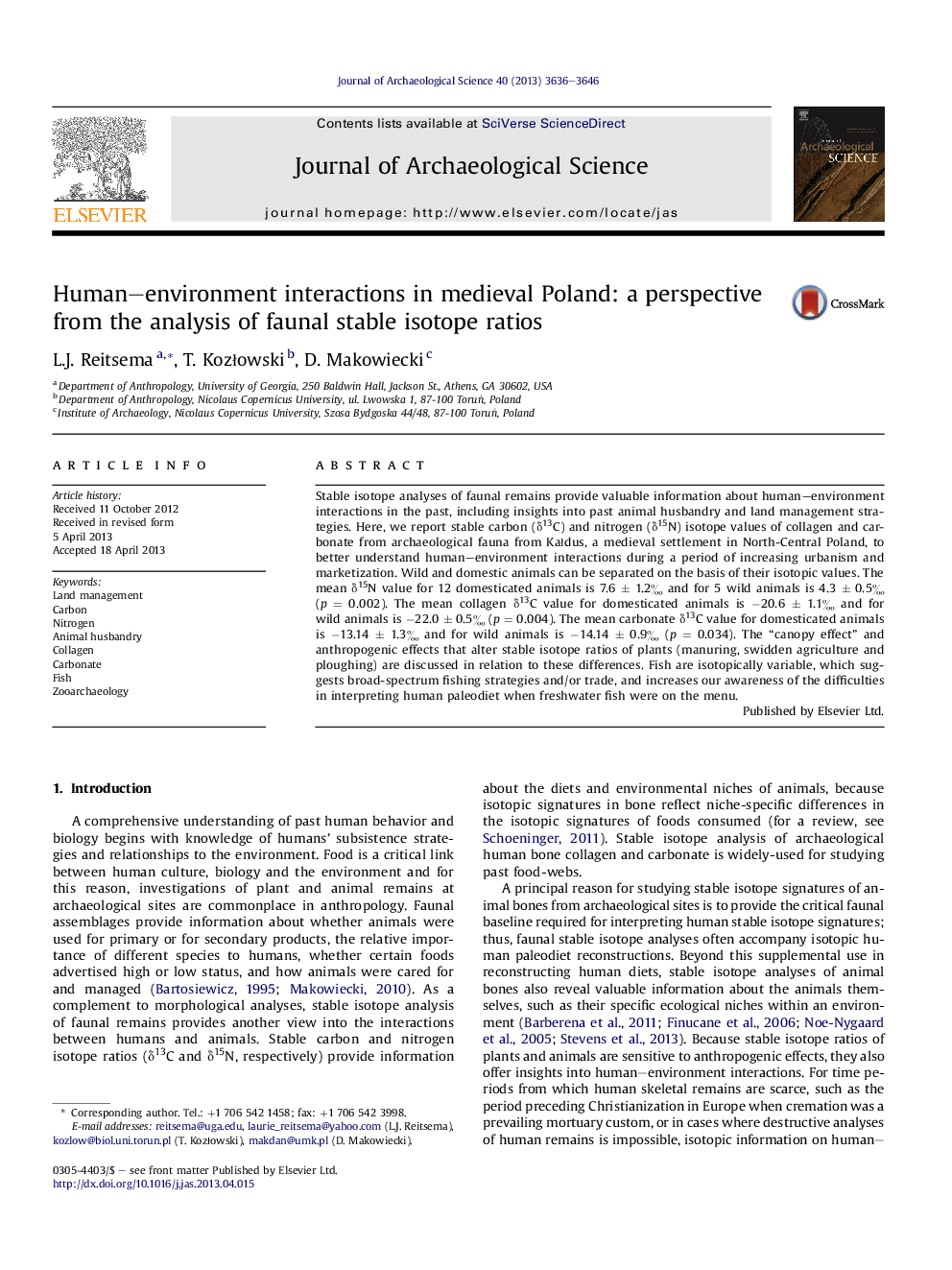| کد مقاله | کد نشریه | سال انتشار | مقاله انگلیسی | نسخه تمام متن |
|---|---|---|---|---|
| 10498904 | 943846 | 2013 | 11 صفحه PDF | دانلود رایگان |
عنوان انگلیسی مقاله ISI
Human-environment interactions in medieval Poland: a perspective from the analysis of faunal stable isotope ratios
ترجمه فارسی عنوان
تعاملات انسانی و محیطی در قرون وسطی لهستان: چشم انداز از تجزیه و تحلیل نسبت های ایزوتوپ پایدار فون
دانلود مقاله + سفارش ترجمه
دانلود مقاله ISI انگلیسی
رایگان برای ایرانیان
کلمات کلیدی
مدیریت زمین، کربن، نیتروژن، دام پروری، کلاژن، کربنات، ماهی، باغ وحش
موضوعات مرتبط
مهندسی و علوم پایه
مهندسی مواد
دانش مواد (عمومی)
چکیده انگلیسی
Stable isotope analyses of faunal remains provide valuable information about human-environment interactions in the past, including insights into past animal husbandry and land management strategies. Here, we report stable carbon (δ13C) and nitrogen (δ15N) isotope values of collagen and carbonate from archaeological fauna from KaÅdus, a medieval settlement in North-Central Poland, to better understand human-environment interactions during a period of increasing urbanism and marketization. Wild and domestic animals can be separated on the basis of their isotopic values. The mean δ15N value for 12 domesticated animals is 7.6 ± 1.2â° and for 5 wild animals is 4.3 ± 0.5â° (p = 0.002). The mean collagen δ13C value for domesticated animals is â20.6 ± 1.1â° and for wild animals is â22.0 ± 0.5â° (p = 0.004). The mean carbonate δ13C value for domesticated animals is â13.14 ± 1.3â° and for wild animals is â14.14 ± 0.9â° (p = 0.034). The “canopy effect” and anthropogenic effects that alter stable isotope ratios of plants (manuring, swidden agriculture and ploughing) are discussed in relation to these differences. Fish are isotopically variable, which suggests broad-spectrum fishing strategies and/or trade, and increases our awareness of the difficulties in interpreting human paleodiet when freshwater fish were on the menu.
ناشر
Database: Elsevier - ScienceDirect (ساینس دایرکت)
Journal: Journal of Archaeological Science - Volume 40, Issue 10, October 2013, Pages 3636-3646
Journal: Journal of Archaeological Science - Volume 40, Issue 10, October 2013, Pages 3636-3646
نویسندگان
L.J. Reitsema, T. KozÅowski, D. Makowiecki,
